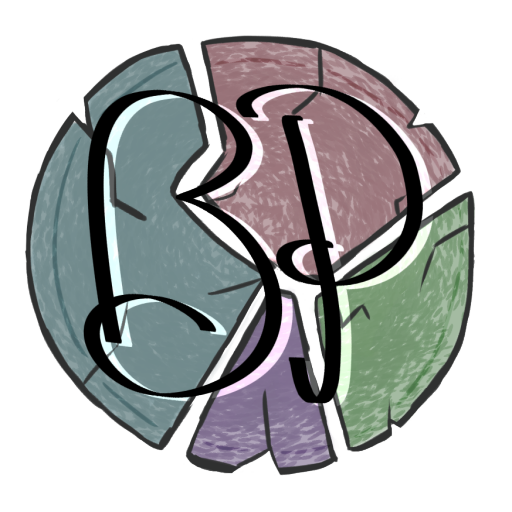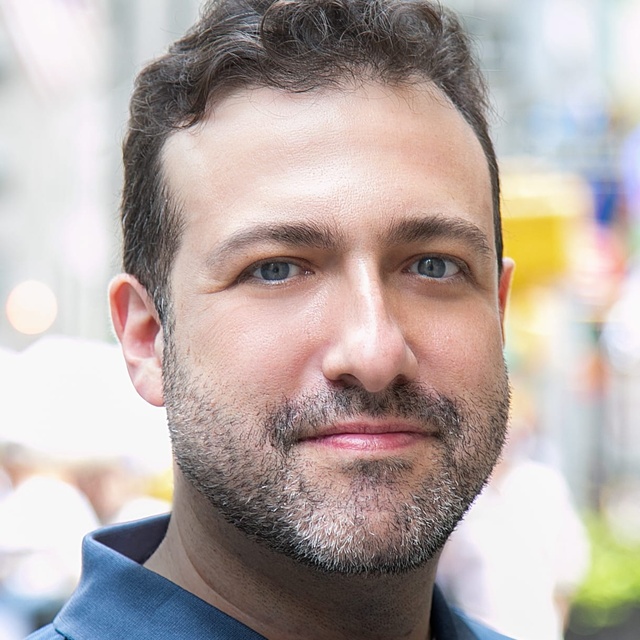Introduction
In late 2024, Ethan Sacks was gracious enough to let me host a small interview with him. He is a prolific writer in the comic book world, penning books for Marvel, Image, AWA Studios, and more. From writing fan favorite blockbusters like Star Wars: Bounty Hunters to more personal tales like A Haunted Girl, he’s a well-traveled writer with previous work in journalism. Ethan took some time to speak with me on various topics, including the relationship between writing for journalism and entertainment, the importance of mental health, and dealing with criticism.
What follows is an edited version of that interview.
Career Beginnings
Jason Holtzman (JH): Welcome Ethan! I figure we can start with a sort of introduction question bridging the gap between where you started and where you are now. You started off in journalism before coming on to comic work. What are some of the differences and similarities in responsibilities with comic writing versus journalism writing? Was there a natural transition between the two?
Ethan Sacks (ES): I’ll start with the second part of that question. It was not necessarily a natural transition, except for the fact that while I worked for 20 years at the New York Daily News, one of the things I covered was entertainment. I covered things like movies and TV, but I also covered what I called the “Geek Beat,” largely because there just wasn’t anyone else in the department who had any interest in a lot of this stuff – including comics.
One of my first ever major cover stories for the entertainment section was way back when Stan Lee wrote a series called Just Imagine for DC Comics. Then one of my other big ones – around 2001 – I did a cover story on how Marvel was being pulled out of bankruptcy by the (then) hot young guns of the comic industry such as Joe Quesada and Bill Jemas. That’s how long ago my journalism first crossed over with comics – they were considered like young guns. So, in doing stories like this, overtime, I just built a lot of contacts in the industry. Joe in particular was a big friend of mine and the way I ended up transferring to comics really started in 2016. I wrote an article for May The Fourth, the Star Wars holiday, which was an interview with actor Paul Blake, who played Greedo. He was very funny, and we were joking about the original cut of Star Wars in which Han shoots first.
Blake was just so funny and I had the idea – wouldn’t it be funny to do a murder investigation into Greedo’s death? But then structure it like Rashomon?* So later I was hanging out with Joe Quesada at a Mets game and I was like, ‘I can’t get this idea out of my head. Can I write a spec script?’ I told him on the off chance it was published, I’d just donate the money to charity ’cause I was still a reporter at the Daily News and he was like, ‘Sure, whatever, I’ll read it.’
At that time I had never written a script before so I did all this research, but I’d also read like a million scripts before due to my coverage as a journalist. I kind of picked the types of format and the types of pacing that I really liked. I called Lucasfilm because I had connections from covering movies and knew Pablo Hidalgo from the Lucasfilm Story Group. He basically told me what I can and can’t do with this story.
I ended up writing it and emailing it to Joe and not hearing anything for months. Then around September 6th or September 7th, 2016 my family and I came back from Japan where my in-laws live and the plane lands at JFK and I turn my phone back on.
I get an email that changes my life. Basically Joe saying “I read your script, never mind Greedo, you could actually do this for a living.”
At the same time, the newspaper where I worked was shrinking and a really tough business. I could not find a job that wasn’t a steep pay cut and I’m thinking what I’m going to do with my future? Enter Joe’s email. He put me in touch with Axel Alonso, who was then the editor-in-chief, and he loved the script. Then the Daily News was offering buyouts because I’d been there 20 years so the stars kind of aligned and I took the leap.
But it’s still hard. Comic book writing (in most cases) is work for hire as freelance and so sometimes it’s good, but sometimes it’s a struggle and you hope the phone rings or hope you get the email, pitch or whatever and you always worry. You’re working on something and then you don’t necessarily have plans for five months from now. It’s not as glamorous as it probably looks from the outside looking in, but that being said – It’s creative. It’s fun.
As far as the second part of your question, number one, I think working for a tabloid where I really had deadlines on everything and you had to write quickly, send it out, and not be precious about it helped. You had to let go of something and emotionally divorce yourself and move on to the next [assignment]. I think that translates very well because comics are also deadline-oriented. You can’t miss your deadlines or you’re potentially costing the company a lot of money because they’re planning the printing schedule. They have to get materials to the artist, and the artist to the editor – like it’s an assembly line. If you screw up, then it has this devastating effect further down the pipeline.
I think the other thing that translated for me from tabloid newspapers to comic books is knowing how to get into a story quickly before you lose your audience’s attention. You can’t really have this long build up. You have to get right into the action.
And finally there have been times when I’ve more directly used journalism with comic books. I’ve written a couple of nonfiction series for AWA Studios 1 called COVID Protocols, which was written in 2020 and then the other two years later was Climate Crisis Chronicles which is very personal to me. I found people around the world who are really at the epicenter of the fight against climate change and interviewed them. This includes a firefighter in California, a mayor dealing with extreme heat in Africa, and a French astronaut who’s literally photographing these giant hurricanes and could see the effects on a scale that most of us can’t see. That’s probably the most direct synthesis of journalism and comics that I’ve ever done.
Comics and Mental Health
(JH): Now that we know where you’re coming from — we can talk about your most recent publication, A Haunted Girl. I have to say, the press you’ve done for this book is pretty substantial – interviews, a book tour, panels at comic-cons, a CBS news appearance, the list goes on! However, the heart of all this wasn’t just promoting your book, but also promoting the importance of mental health and mental health resources. How has that been? Have you felt like you’re making positive impacts or gotten positive feedback from this big push?
(ES): Yes, I mean in some ways it’s been better than I could have expected. The main reason I wanted to tell the story, was #1, for my daughter. Originally it was written for her, but then she reached a place where she could join me.
And as a refresher—for any readers of this interview who may not be familiar with me and don’t know what the heck this is—my daughter had a mental health crisis and was hospitalized for depression and suicidality when I was starting out very early in my comics career around 2019 and early 2020. I remember writing Star Wars Galaxy’s Edge at the time, and I was literally writing from the hospital cafeteria, unsure of what the future would be like. All of a sudden, our status quo completely changed and I really wanted to come up with a story that would inspire her to keep wanting to live and maybe do the same for other teens too.
This took years. By the time we were ready to send it out, a publisher that shall not be named dropped it in March 2020 as the pandemic set in. But fortunately, the timing worked perfectly, because, by late 2022, my daughter was in a position where she wanted to be a direct part of it. So, we did it together, with artist Marco Lorenzana, and teamed up with the American Foundation for Suicide Prevention and the American Psychiatric Association who helped with sensitivity reading. They also put resource guides in the book, so if somebody reading it felt the same way that my daughter did back then, they would have go-to resources.
A Haunted Girl is a story of a 16-year old girl coming out of the hospital, struggling to reintegrate to school with depression and suicidal feelings, and then finding out that she’s the only one who can stop a supernatural apocalypse—very much like Luke Skywalker or Harry Potter or Buffy. She’s having to push forward to live so that everyone else can live, too, and she finds that strength to persevere.
That’s what we tried to do, and we’ve had these moments where the press really glommed onto it.
There’s a local anchor, Cindy Hsu, at CBS News here, who’s been very public about her experience with checking herself into a psychiatric ward and feeling suicidal as an adult. She has been an incredible advocate for spreading mental health information and working against stigmatization. So much of [mental health information] is hidden because people are embarrassed to talk about it or, you know, think there’s something wrong with them and think it’s so out there. In reality, many people are struggling with the exact same things and so half the battle is to destigmatize it so people can realize they’re not alone, and that they can seek help.
Besides all the media stuff, the other cool thing was that we went around the country a little.
I did this mostly by myself, but here and there I’d be at conventions with my daughter, and you’d run into a person here, a person there, who’d share their own stories and what this book meant to them. For example, there was this high school teacher at Third Eye Comics in Annapolis, MD who bought copies for at-risk students in his class and he said one girl told him that she called the crisis hotline number in the back of the book—we probably helped that person through a very low point, and I mean it’s one person, but I know we made that difference. More than any amount of copies that the book sells or doesn’t sell, that’s what’s important.
(To be continued…)
Author Bio
Jason Holtzman is a senior at Ball State University studying media promotion and management with a minor in creative writing. He intends to work in the publishing industry after college after serving as an editor on various projects, including multiple Ball State publications. He currently works as assistant editor as a part of Ball State’s Open Access Publishing and can probably be found reading or spending time with his fiancée and their many pets.

